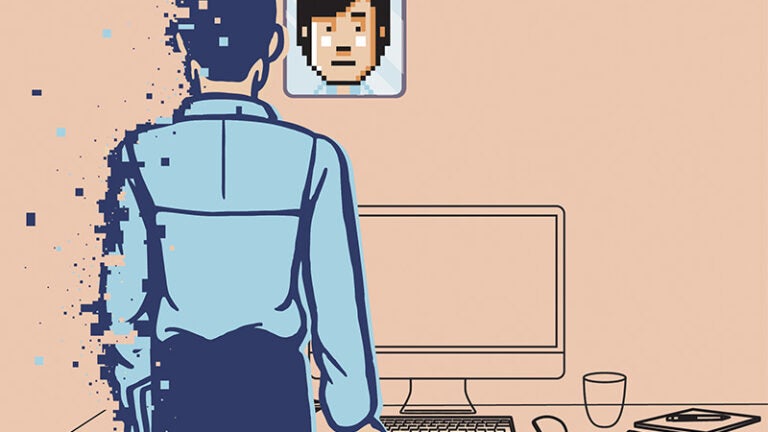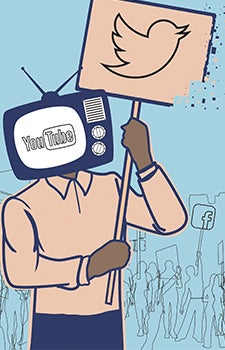
Personal Net Worth
For many parents, the inexorable approach of puberty and those awkward teenage years sends a clear signal that it is time for “the talk.” The conversation in mind, however, has nothing to do with birds or bees.
The discussion centers instead on the dangers their tweens and teens face from a near ubiquitous source; one that they, having first encountered it as adults, are themselves struggling to navigate — the Internet.
Aside from the more obvious sinister threats — bullying and cyber-stalking among them — incautious travelers through the online world face the possibility of damaging their own real-world reputations through missteps in the digital realm.
For the record
In 2011, a student attending a public university in California found out just how swiftly a mistake can escalate to character-crushing levels when she posted a racist rant admonishing Asian students for speaking on cell phones in the library. The short and extremely cringeworthy YouTube video quickly went viral, garnering extensive coverage through the news media, as well. The student soon began receiving all manner of hostile messages, including threats against her life.
Despite removing the video from the Web and apologizing, the third-year political science major soon left the university to escape the negative attention. She has remained (wisely, one might agree) absent from the Internet and the public eye ever since.
While her motivations for posting the rant in the first place were never confirmed, it may be that she, like many of her peers, viewed YouTube as a platform for gaining some level of celebrity, even if only among her friends.
“There’s a whole layer of identity that people are encouraged to create online,” said Karen Sternheimer, associate professor (teaching) of sociology. Sternheimer’s research includes studies of the construction of celebrity culture and how celebrity has been manufactured from the early 20th century to the present. Her book Celebrity Culture and the American Dream: Stardom and Social Mobility (Routledge, 2011) considers how celebrity culture in the 20th and early 21st centuries reflects and reinforces notions of social mobility.
“I would guess that it’s not the majority of people who are really looking for fame,” she said. “I think there’s this instant gratification of posting something and being validated by others. ‘Oh, people are paying attention to what I have to say. People like my picture.’ ”
The student who created the so-called “Asians in the Library” video forgot or failed to realize that the World Wide Web is, by definition, available to a global audience, friendly or otherwise. If she was, in fact, aiming to fashion for herself an online celebrity identity, she would have done well to account for that extreme level of exposure.
“It reminds me of the work of a seminal sociologist, Erving Goffman, who talked about what he called — and this was in the middle of the 20th century, so he obviously was not talking about anything digital — but he talked about ‘frontstage behavior’ and ‘backstage behavior,’ ” said Sternheimer.

Savvy users are learning to turn the seemingly limitless reach of the Internet to their advantage, building their skills — and reputations — in an increasingly tech-oriented world.
Goffman, considered by many in the field as one of the most important sociologists of the 20th century, argued that all actions are intended to present and maintain certain impressions of one’s self. Humans are actors on a stage performing for an audience, he maintained, and the only time they can be themselves and get rid of their role or identity in society is “backstage,” where no audience is present.
With the advent of the Internet, and social media in particular, backstage can more easily become frontstage rather suddenly — and possibly permanently — according to Sternheimer.
“Your backstage behavior is no longer just a fleeting moment; it can live on forever,” she said. At the same time, she added, it is possible that airing the more personal self may simply evolve to be the norm.
This evolution seems nearly inevitable as we become entwined with our digital personas.
Identity in context
Eric Horowitz is a graduate student working toward his Ph.D. in psychology. His research focuses primarily on how people view the connection between their current and future identities and when, why and how that view influences behavior. Horowitz’s work, guided by Daphna Oyserman, Dean’s Professor of Psychology and co-director of the Mind and Society Center at USC Dornsife, springs from a theory called “identity-based motivation.”
“The key element of [the theory] is that people have all these different identities — you can be a mother and Hispanic and a student — but which identities come to mind and what they imply for action is shaped by the context,” explained Horowitz. This “dynamic construction” of identity determines how people behave.
For instance, if something in a person’s current context cues that person’s school identity, the set of behaviors that feel right will likely be different from a situation in which the context cues a social identity. At the same time, the specific behaviors associated with a given identity are themselves influenced by context.
“For example, a school identity might lead one to view studying as the right behavior when the context cues academic excellence,” Horowitz said, “but if the context cues school spirit or school community, a salient school identity could lead one to feel that the right behavior is attending a basketball game against a rival — a leisure behavior rather than an academic behavior.”
The near-overwhelming opportunities for interaction online weight this process, according to Horowitz. “I think the ubiquity of social media likely shapes both the frequency that your social identity is on your mind and what that social identity implies for behavior.”
But is social media’s influence on identity and behavior bad?
“It depends,” Horowitz said. “Obviously if you’re at work and you glance at your phone and see a Facebook notification, and that makes your work identity less salient, then that can be negative. Similarly, it could be bad if checking Facebook becomes an action that feels fitting for your work identity.”
But the opposite is also true.
“I know for me, I’m on Twitter a lot, but the people I follow tend to be academic, so that can have the opposite effect,” he said. Glancing at Twitter and seeing a post from a social psychologist could spur him from a restful state to working or thinking about his research. It may allow this kind of thinking to feel like a fitting behavior for non-work identities. “In that sense it would be a good thing.
“It could go either way depending on exactly how you use these social networks and when you’re using them. But they certainly, I think, have the potential to cue different identities and behaviors at different times in ways that may not have happened before they existed.”
Horowitz suggests that some social media tools may actually prime people for success. He points to Facebook’s “On This Day” feature, which prompts users to repost an entry from the past, or the popular “Throwback Thursday” hashtag.
“It creates this greater awareness of the past and that your identity exists over time. It takes you out of the moment,” he said.
“There is research suggesting that seeing yourself existing more across time rather than in the moment is actually beneficial. When kids feel an inner sense of continuity with the future versions of themselves, they’re more likely to study. And people are more likely to behave ethically when that happens, as well.
“I think in some sense Facebook’s total record of your entire history as a person may give you the sense that you do exist across time and it’s worth investing in your future exactly because you don’t only exist in the moment.”
Ultimately, that insight draws people back to their “real-world” lives.
Making connections
Alumna Erica Berger is a writer, journalist and entrepreneur with extensive expertise in digital media. Named to Forbes magazine’s “30 Under 30” list in 2012, she credits her use of digital platforms for helping to build her career identity, though it was more a natural inclination than a plan of action.
“I worked hard, I used Twitter early and was very strategic about the hashtags I would use, the beats that I would tweet about,” said Berger, who graduated in 2009 with a bachelor’s degree in international relations. “But I never put out a digital ‘Roadmap of Erica’ saying, ‘By this time I would have this many followers; by this time I would like to change this job; by this time I’d like to be here in my career; by this time I’d like to launch a start-up.’ That’s never been the case.”
Berger is clear that the real value of her online presence lies in solidifying in-person connections.
“Of course, I’ve met a lot of the people whom I work with as well as friends online, but then it’s our offline experiences together that create trust,” she said. “Somebody the other day said to me, ‘I don’t see you that often in person but I feel like I know you because of the way that you share online.’ So it’s a blend.”
In the end, she said, “the Internet is more human and face-to-face than a lot of people think or believe it is. There are still so many relationships that are deepened offline.” It may just depend on how much you put yourself out there online.
Fear of the new is nothing new
So then, are parents, as they prep for “the talk,” justified in their fears about their children’s digital well-being? Sternheimer sees this as a new spin on an age-old question that, as is usually the case, will take time to answer.
“When we’ve had changes in communication technologies, and there have obviously been a lot in the last several decades, it produces anxiety and fear about what will become of young people today,” she said. “And then eventually this starts to diminish as people become accustomed to it. Seeing that something isn’t a threat takes a little while.”
Sternheimer suggests that perhaps it is the older generation whose identities feel threatened, but that is just an inexorable part of the march of time.
“I think there’s a sense of people feeling obsolete; a time we knew and thought we understood is gone. Things don’t operate in the same way they used to and in a way we felt comfortable with, and maybe we think things were simpler then.”
But as we all know, she added, “things were always simpler in the past — except they weren’t.”
Illustrations by Matthew Pla Savino for USC Dornsife Magazine
Read more stories from USC Dornsife Magazine’s Spring-Summer 2016 issue >>